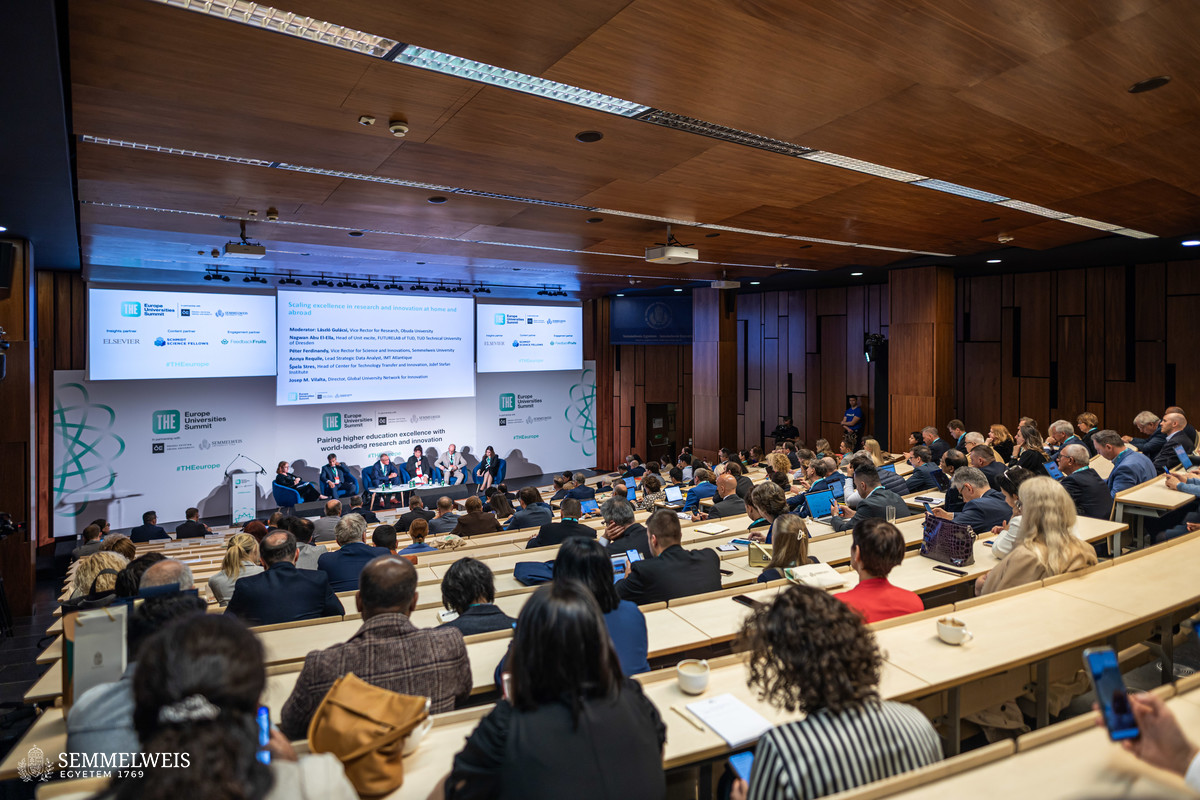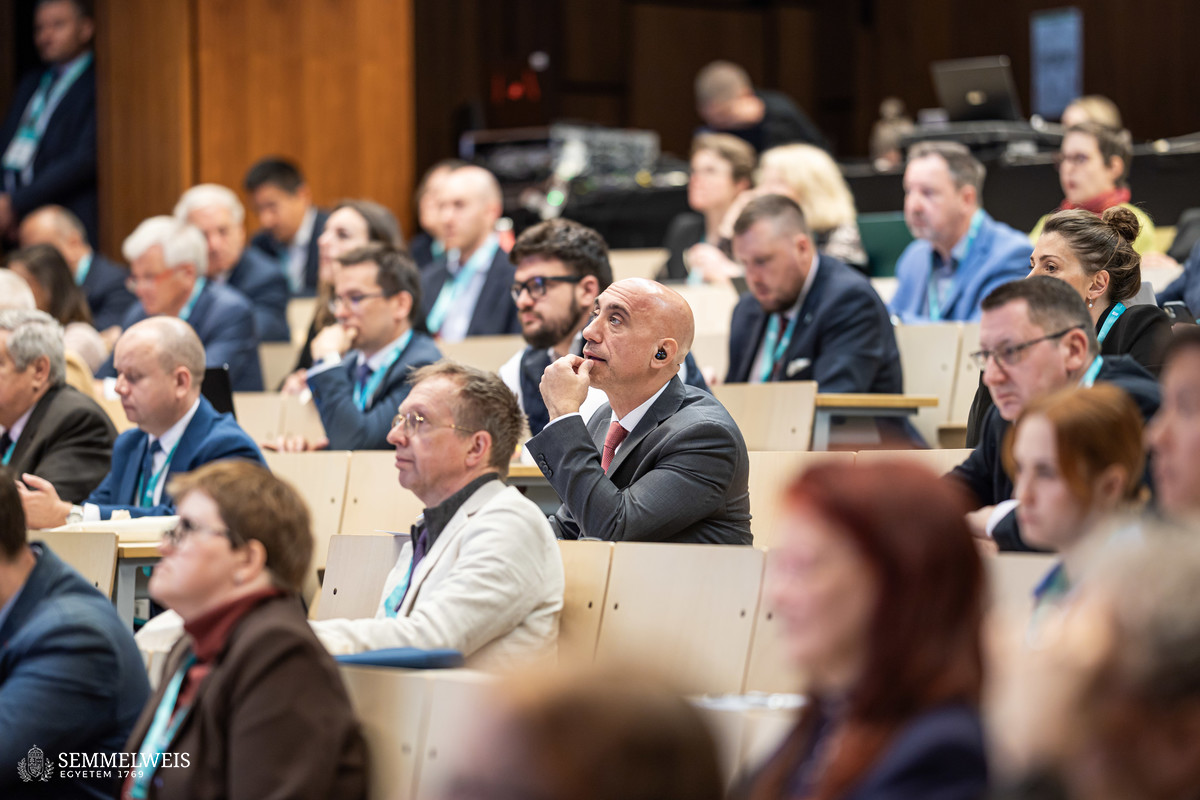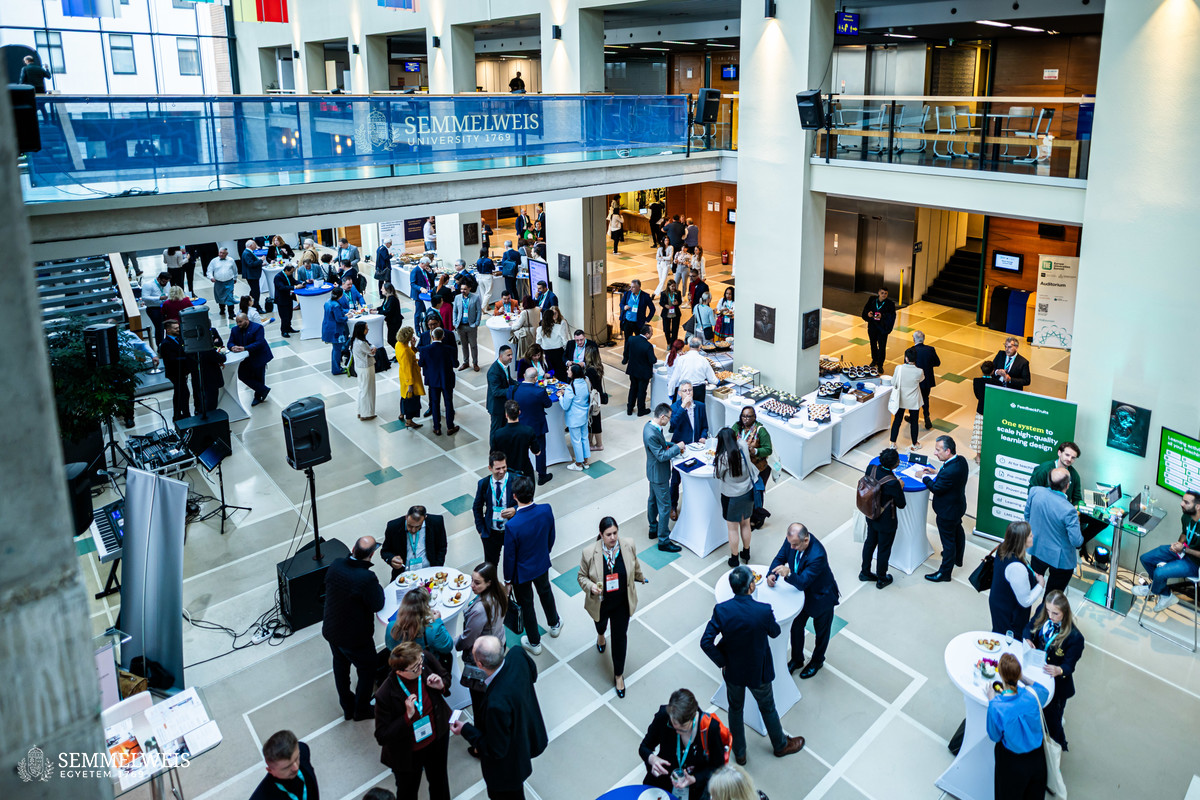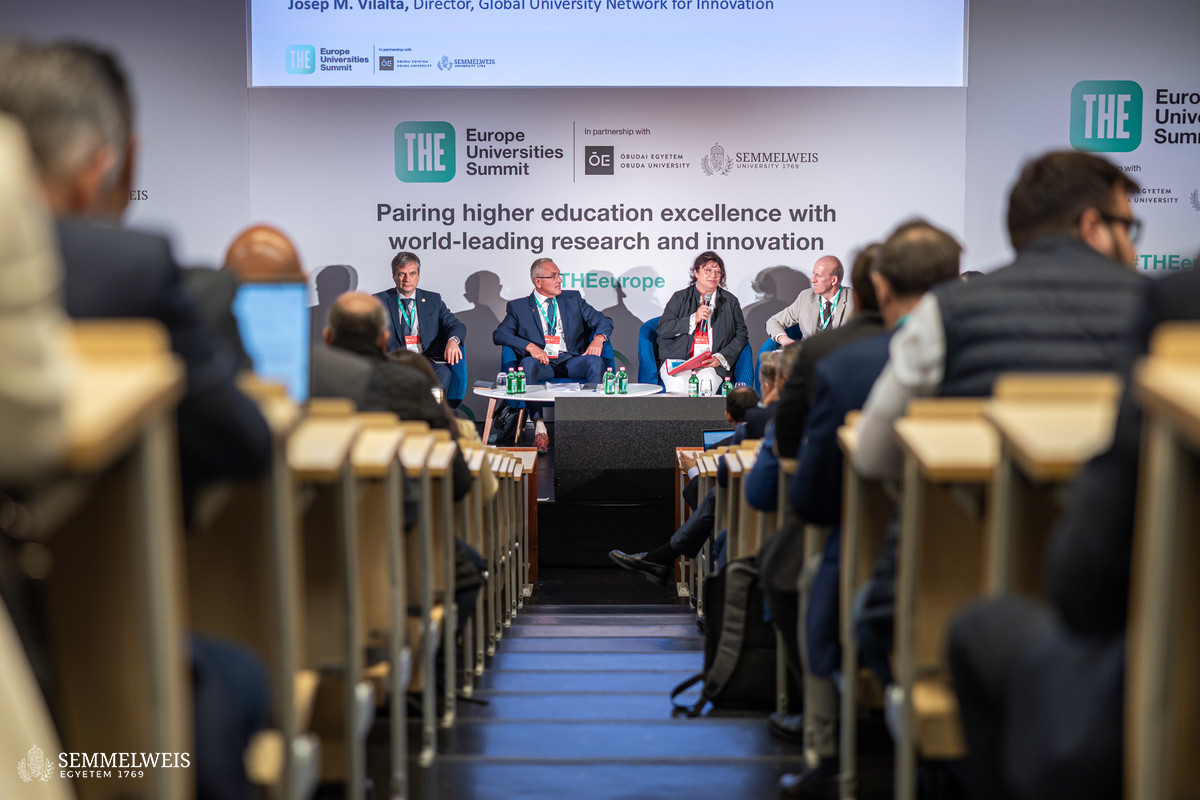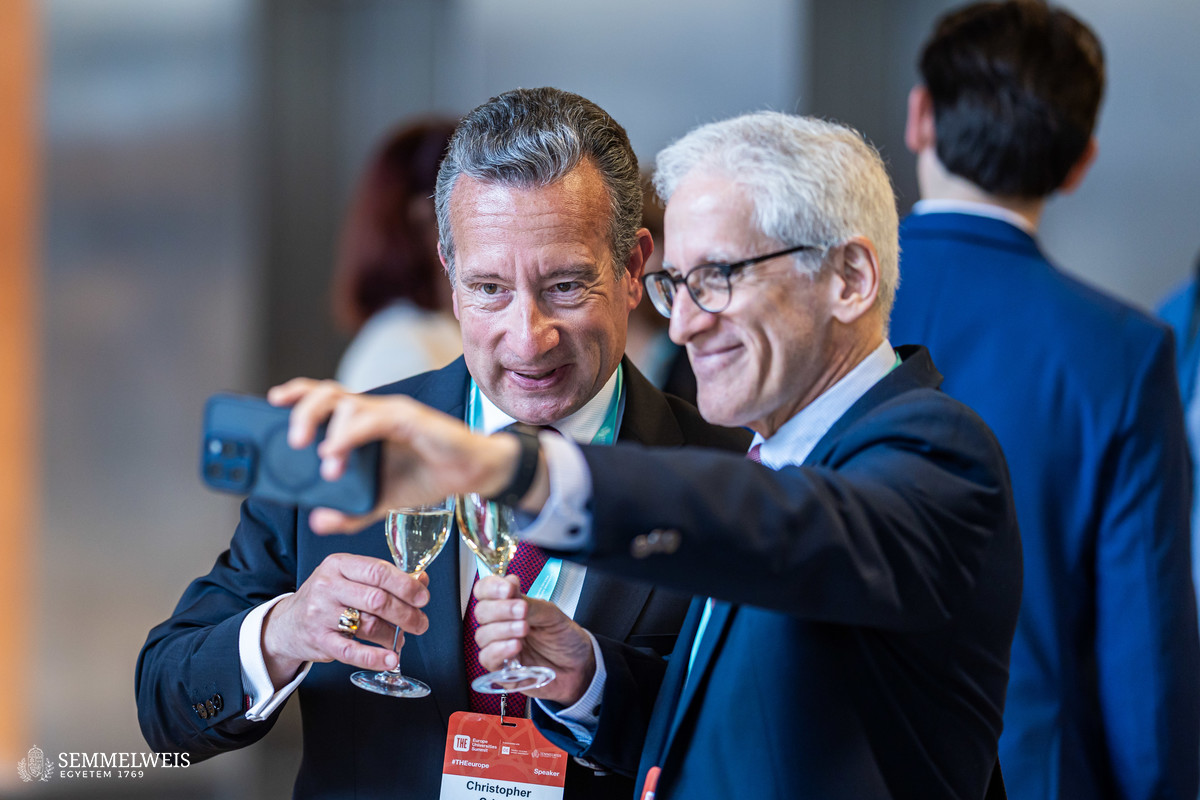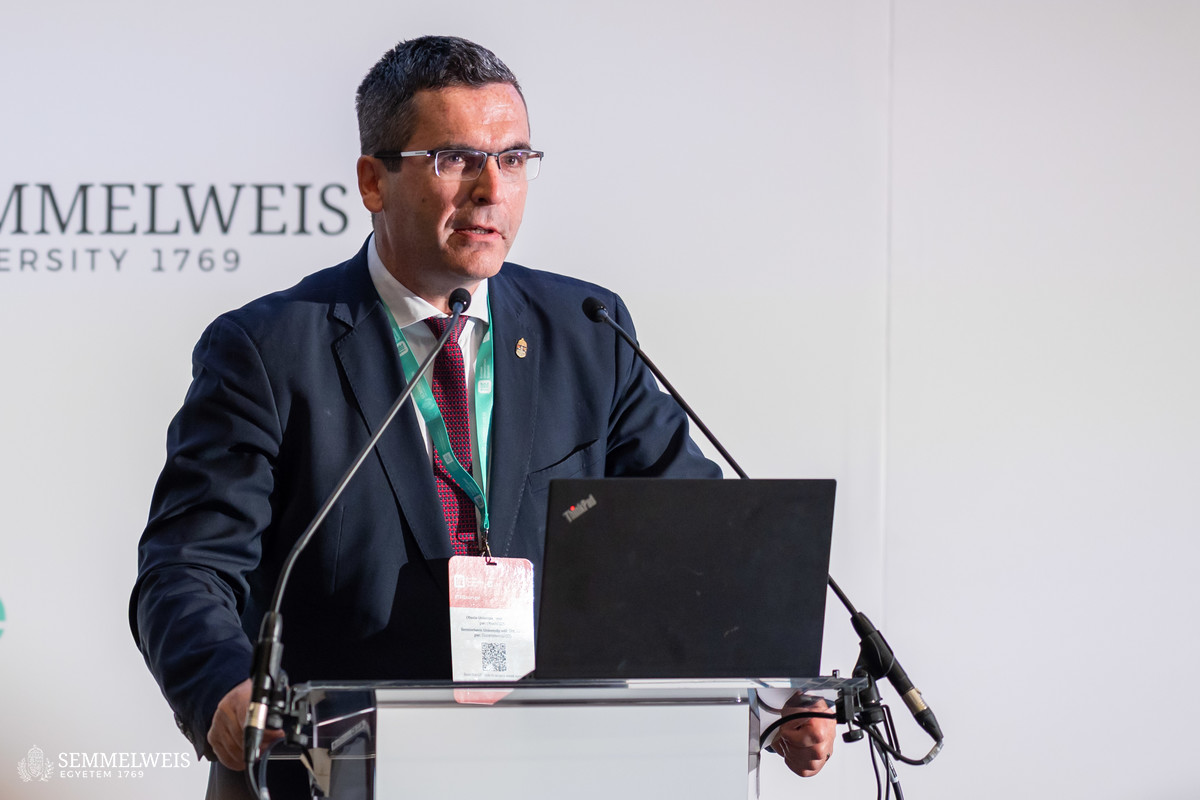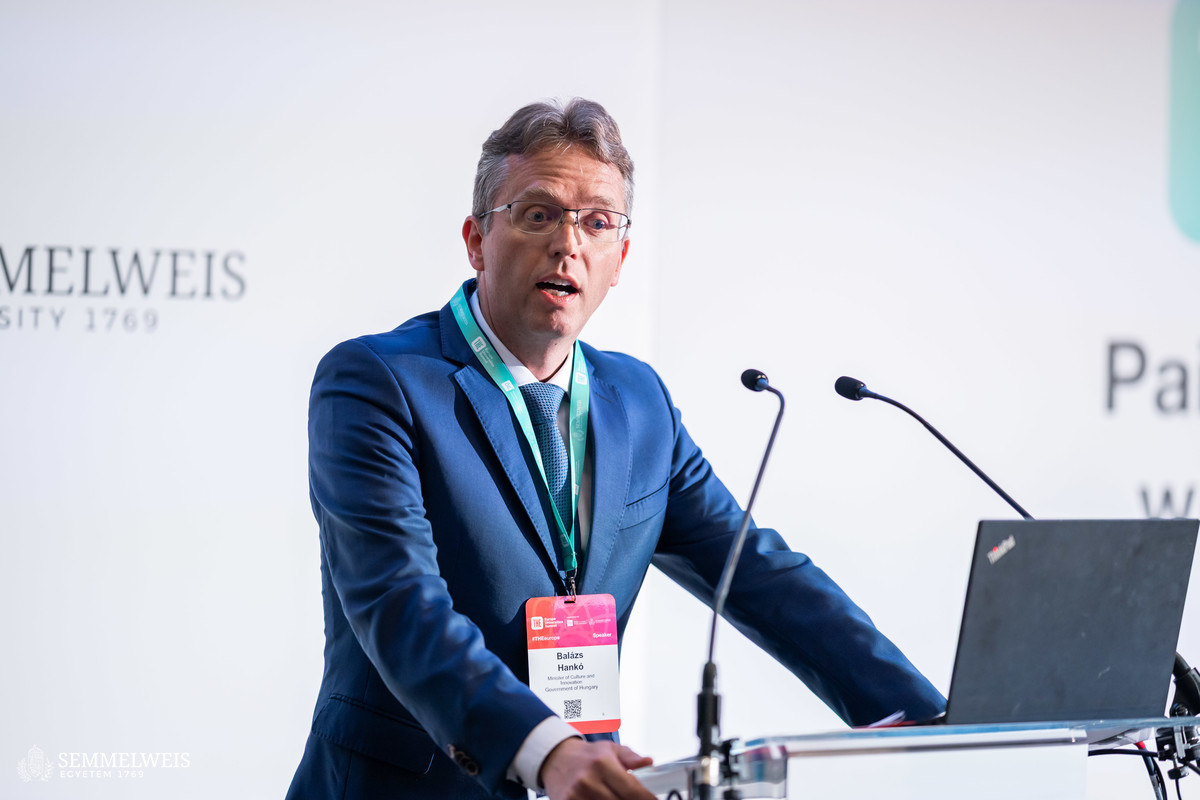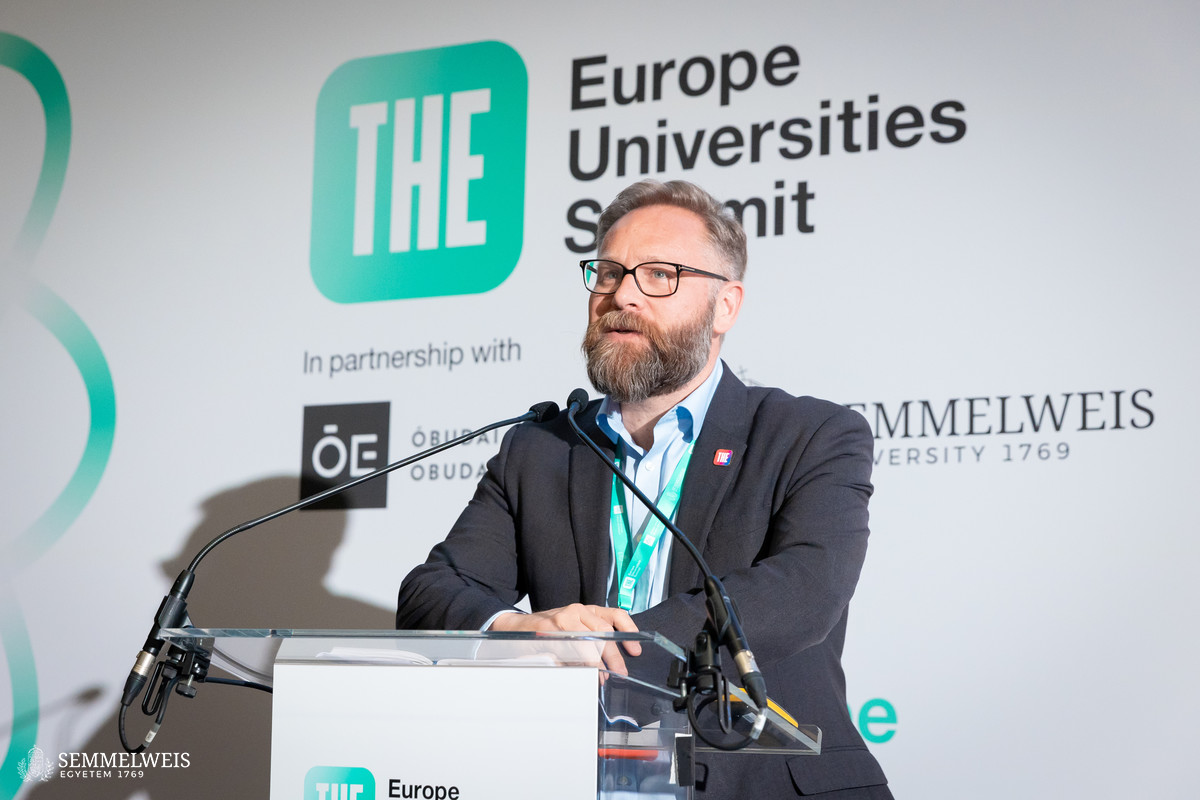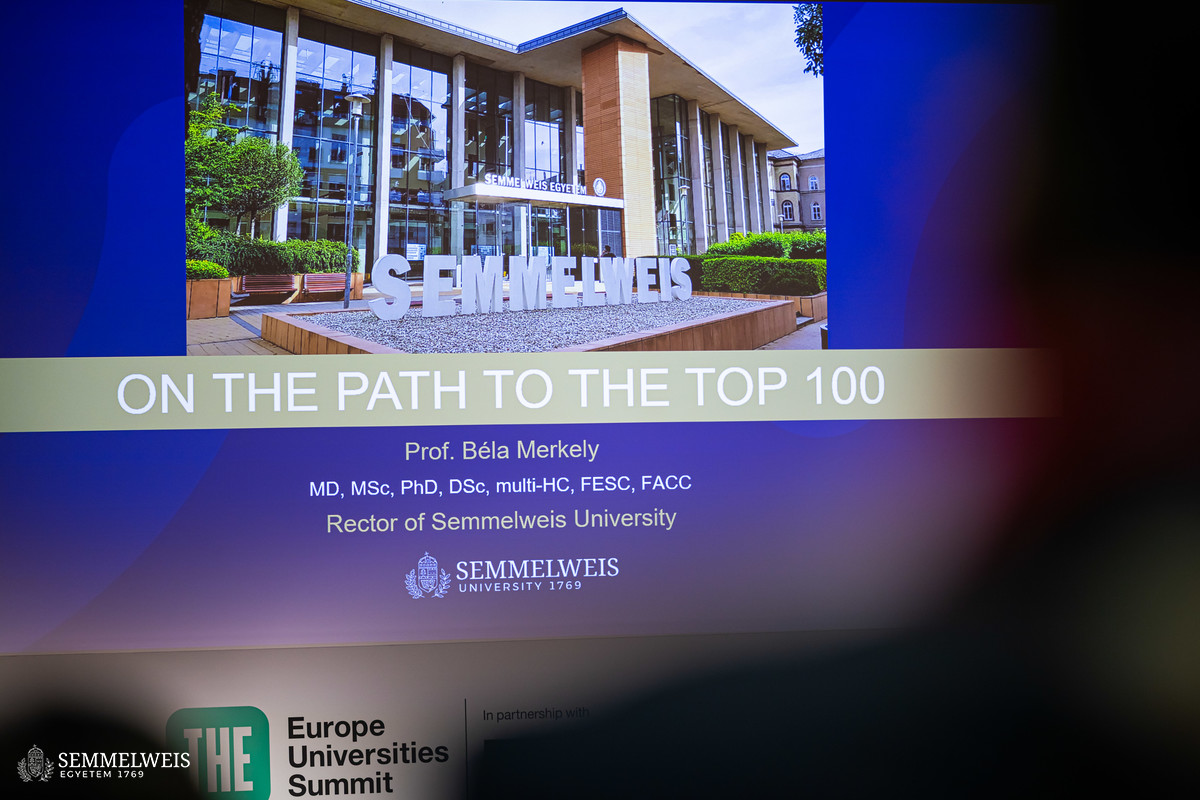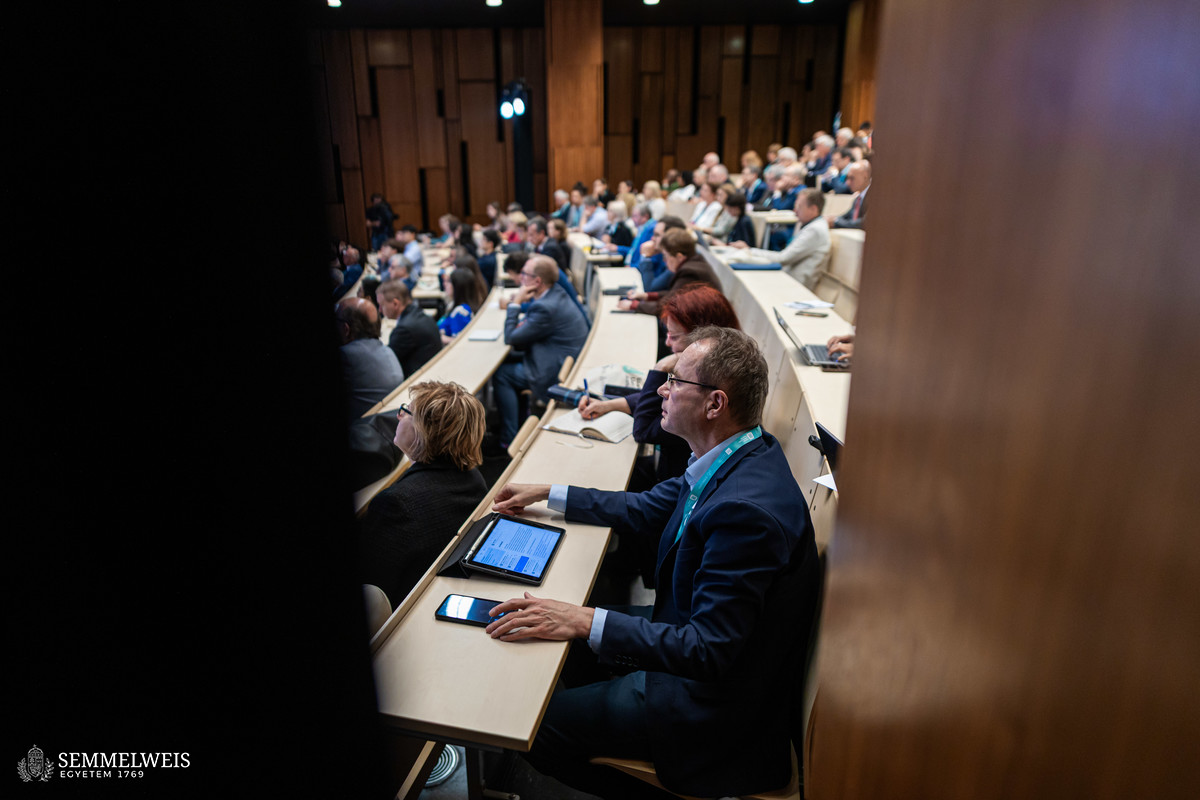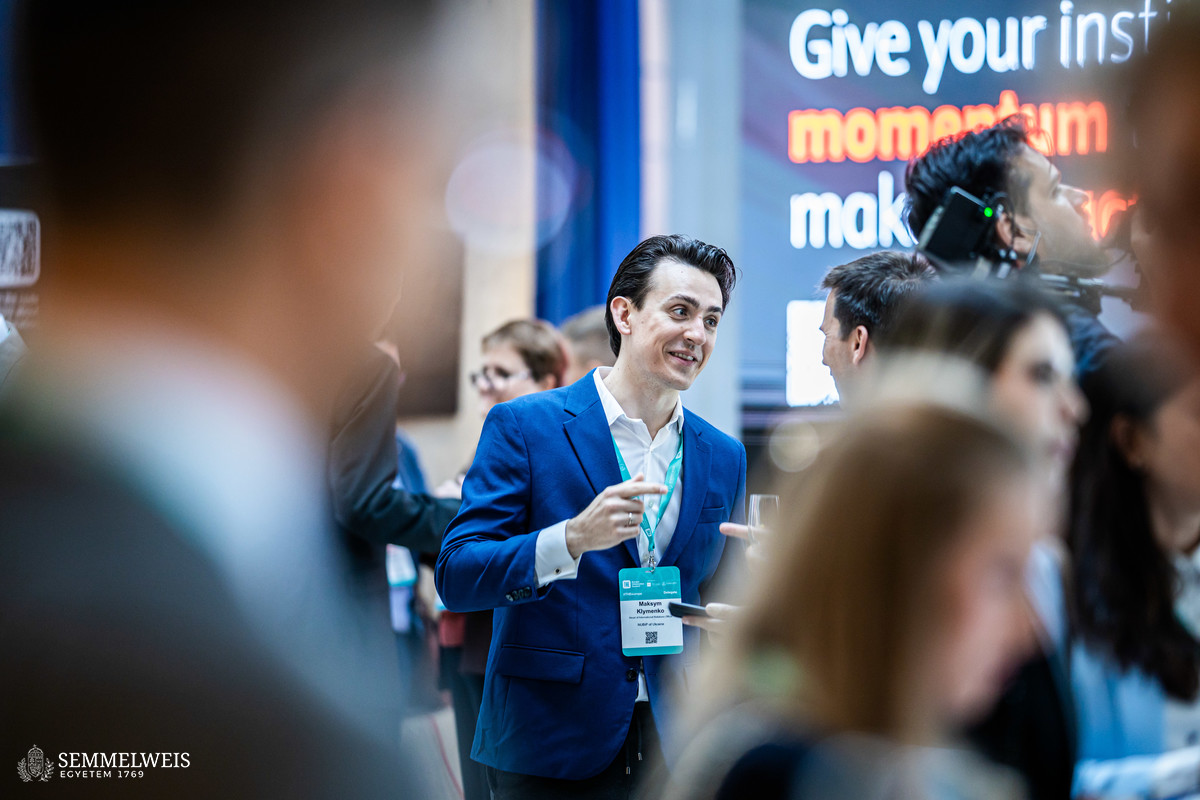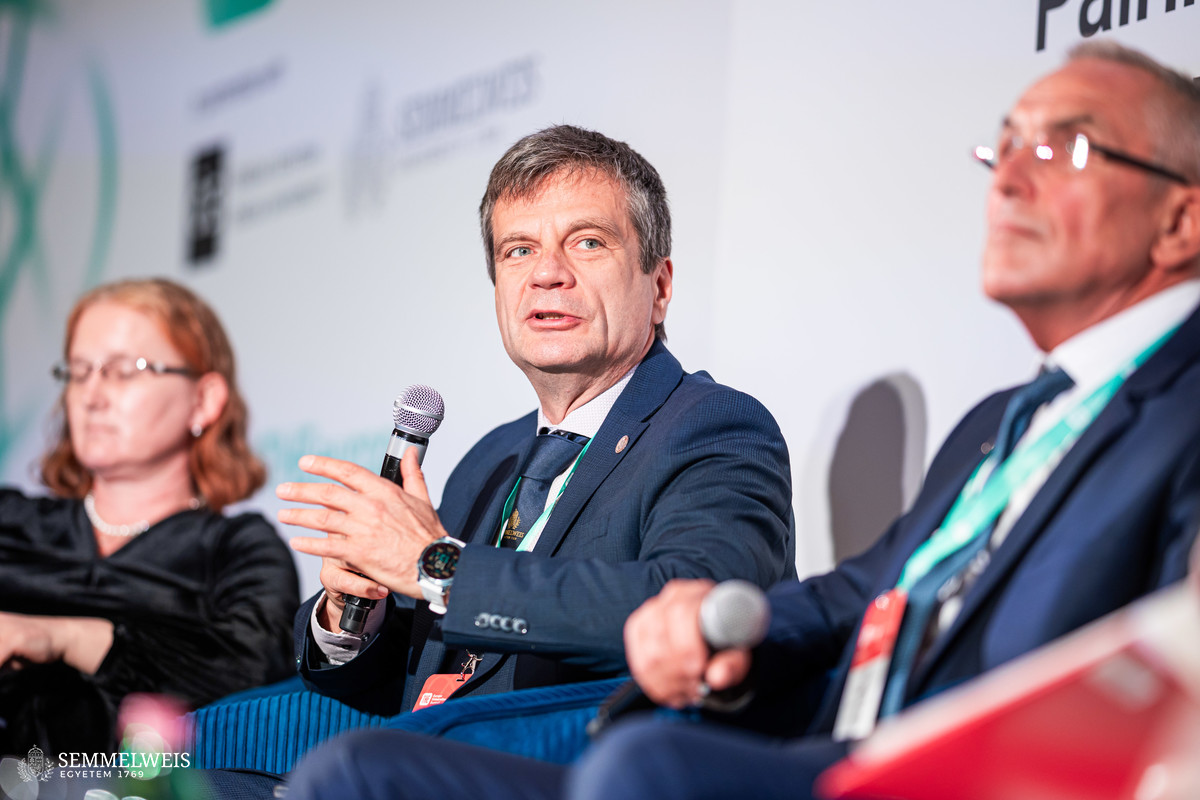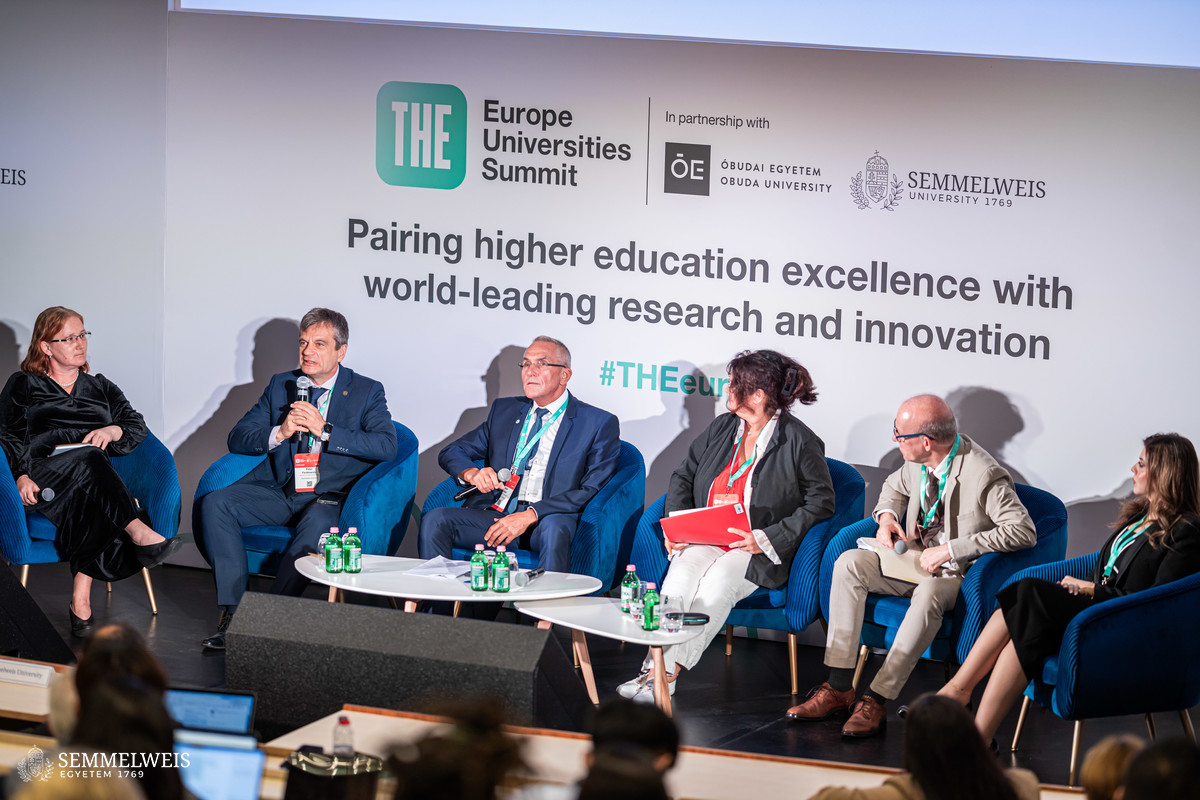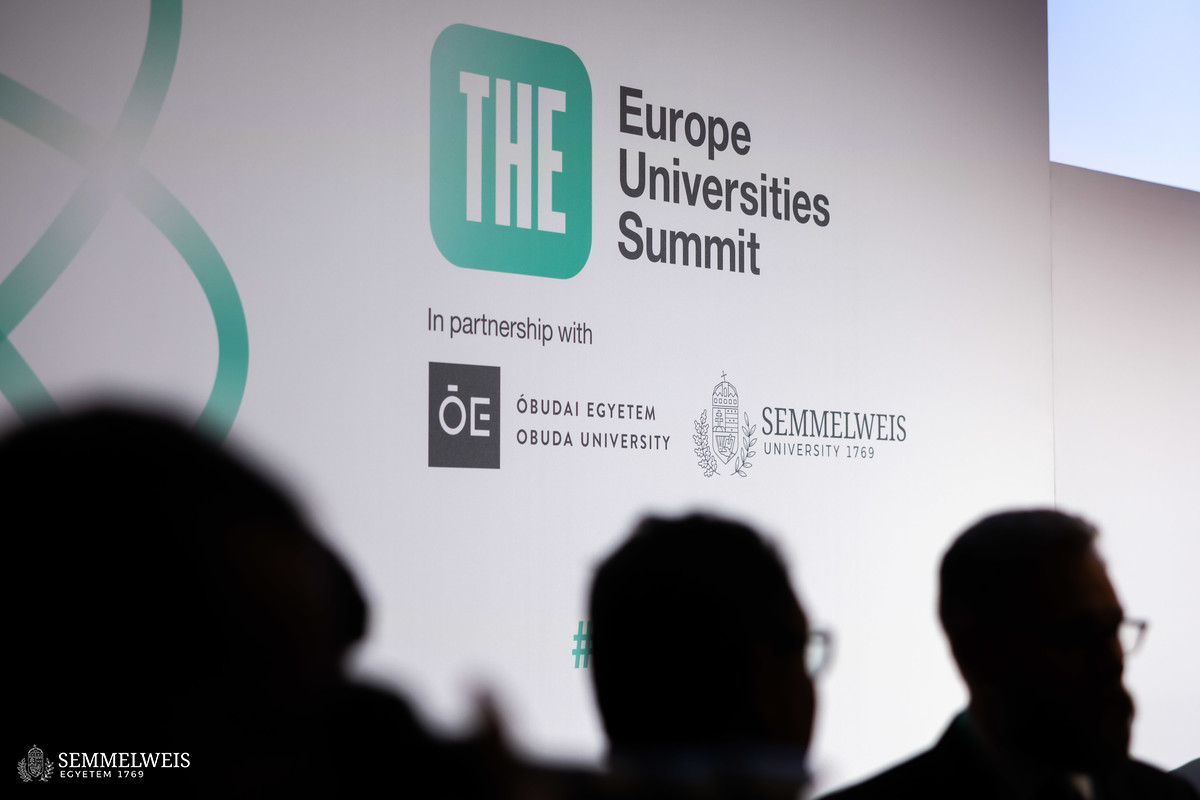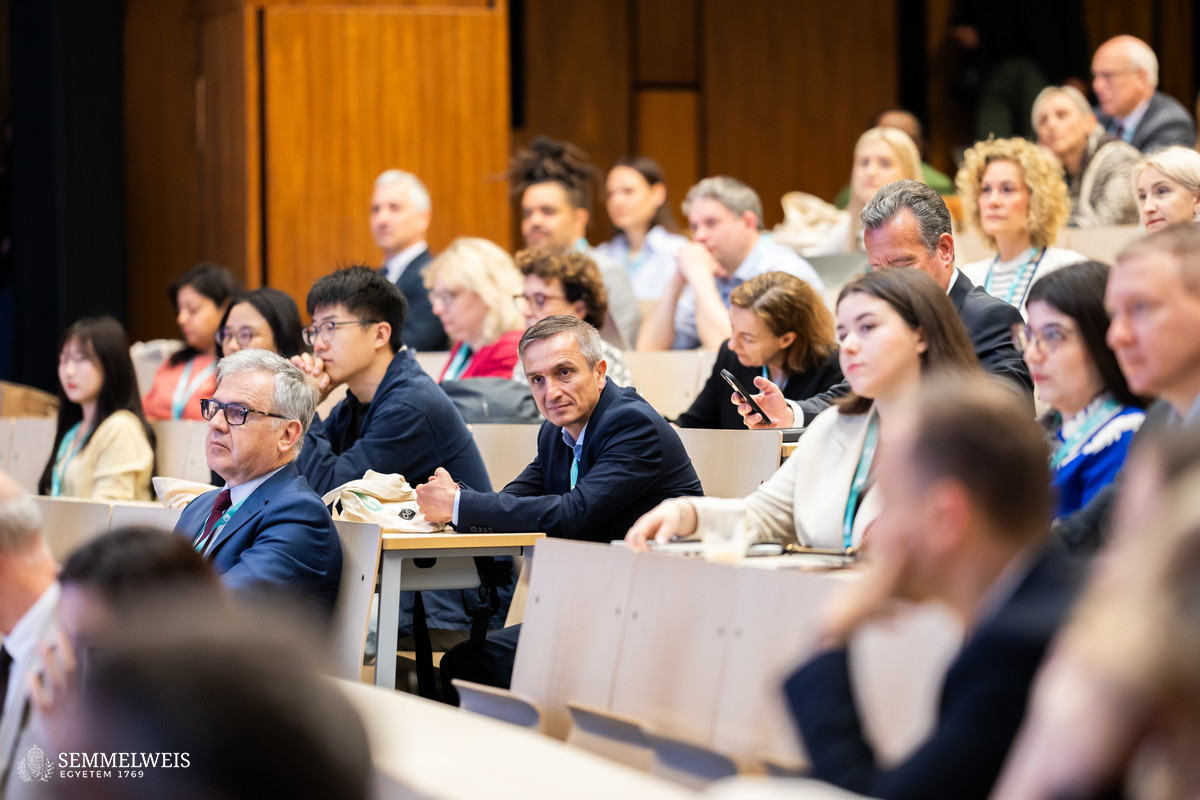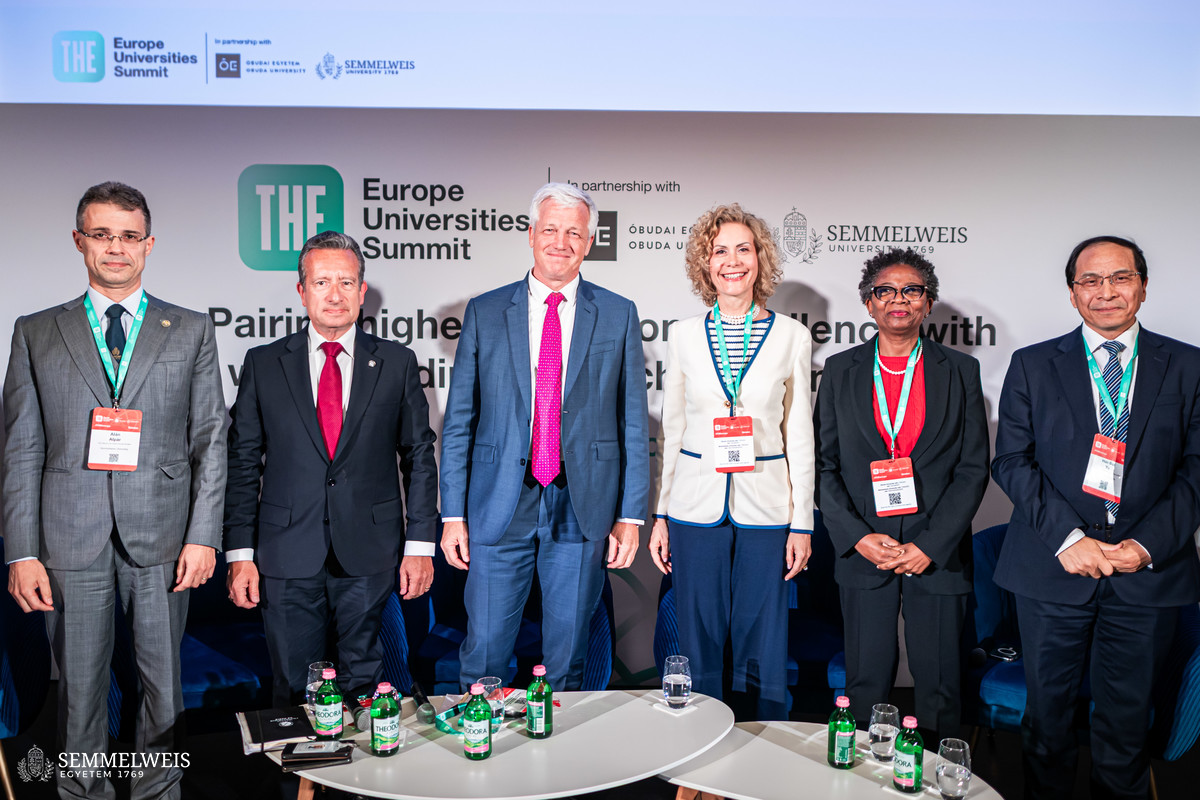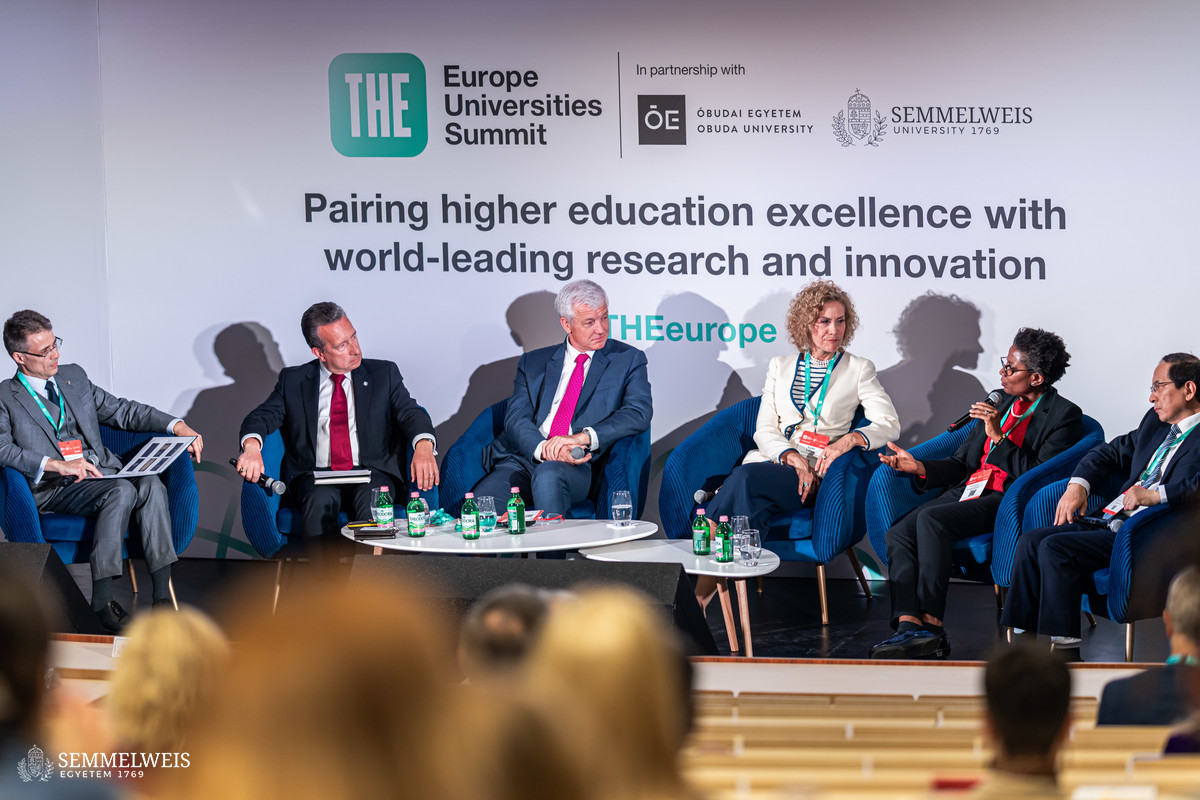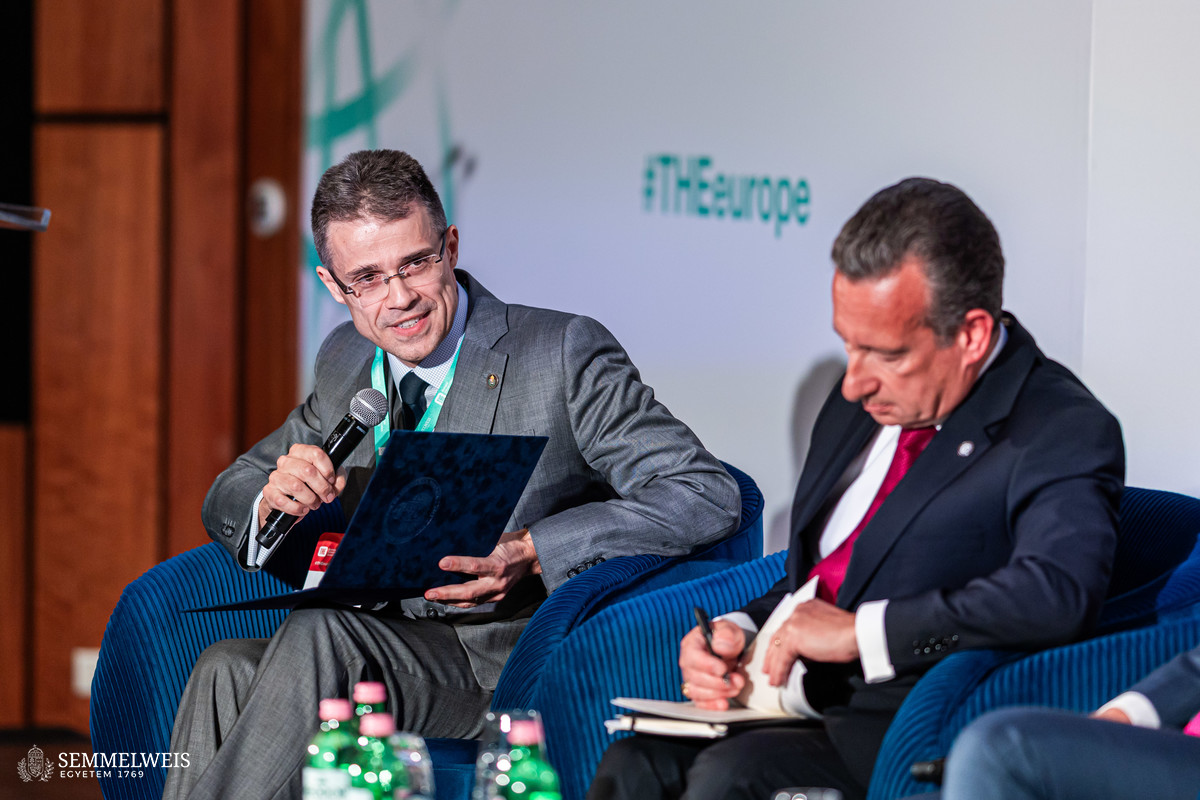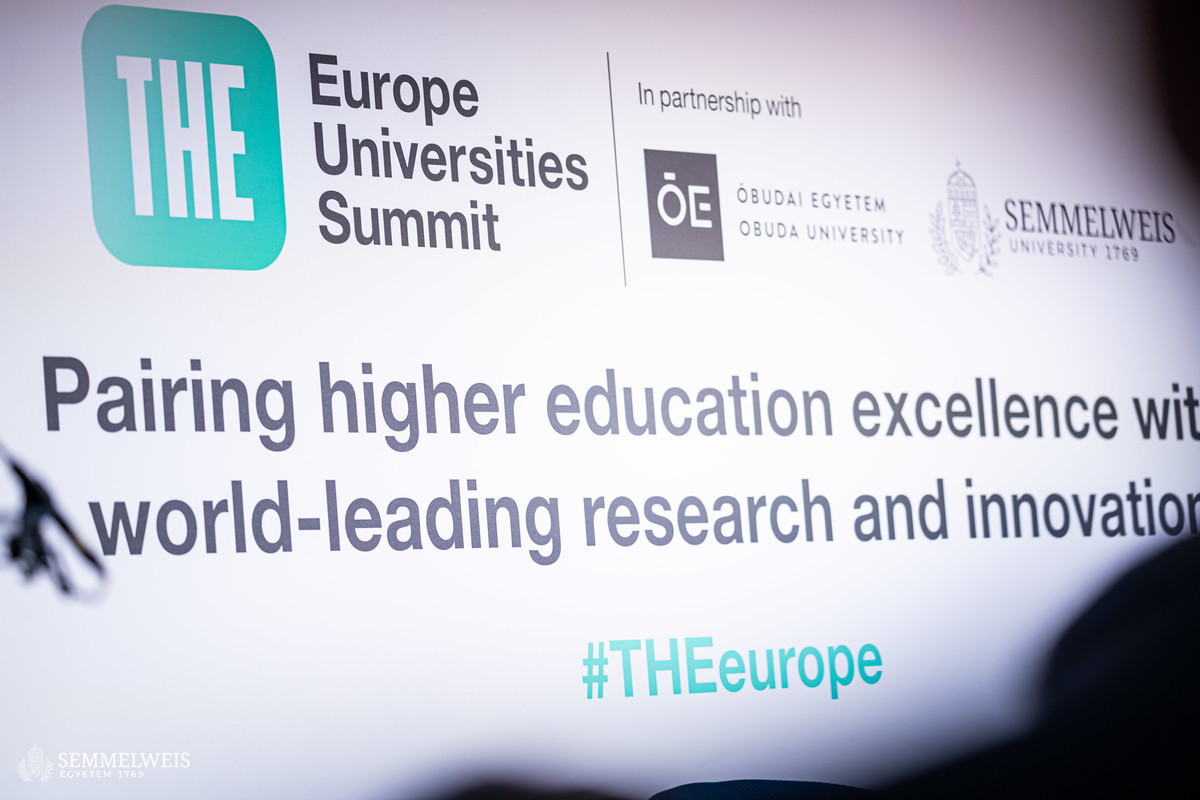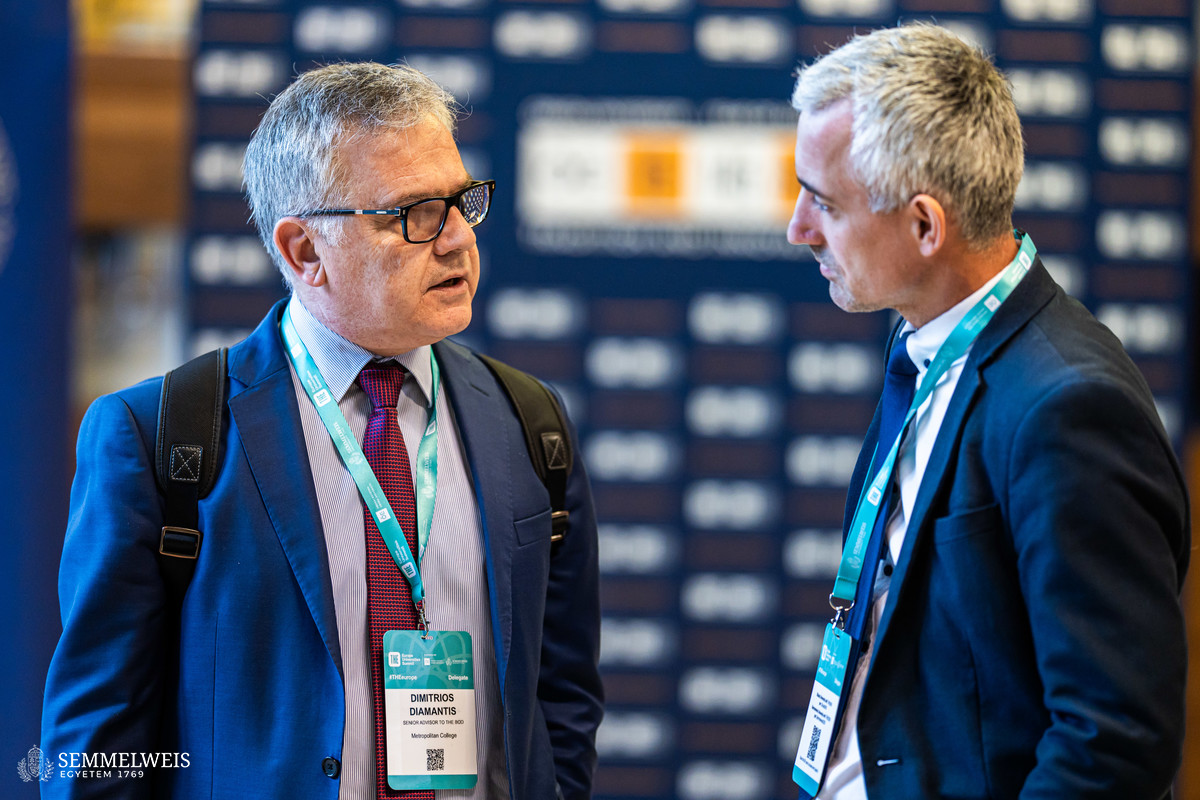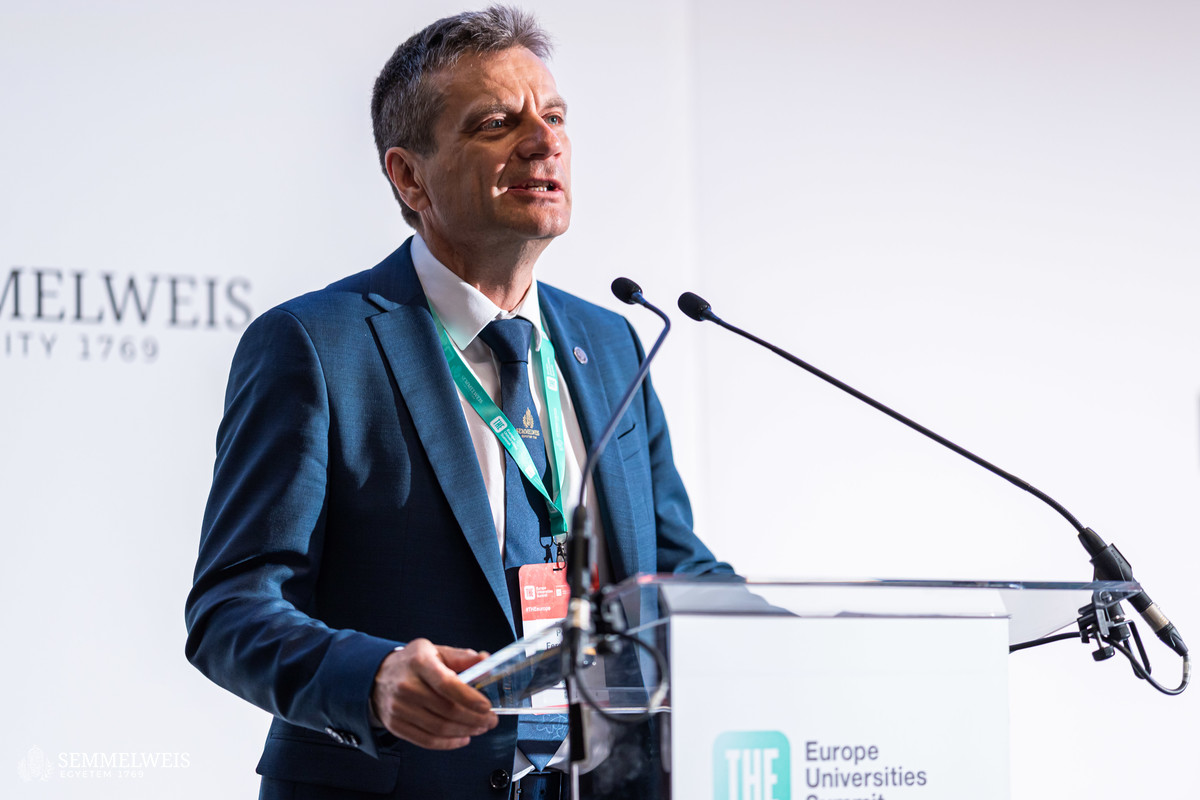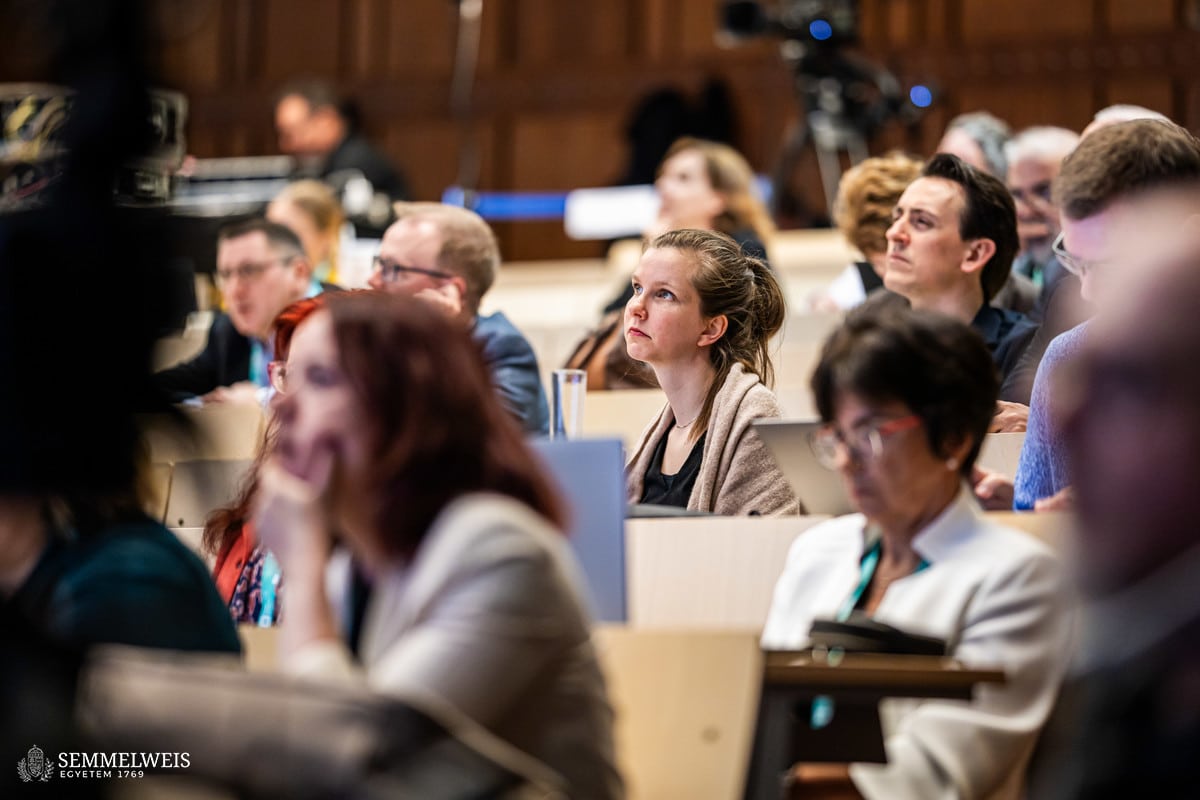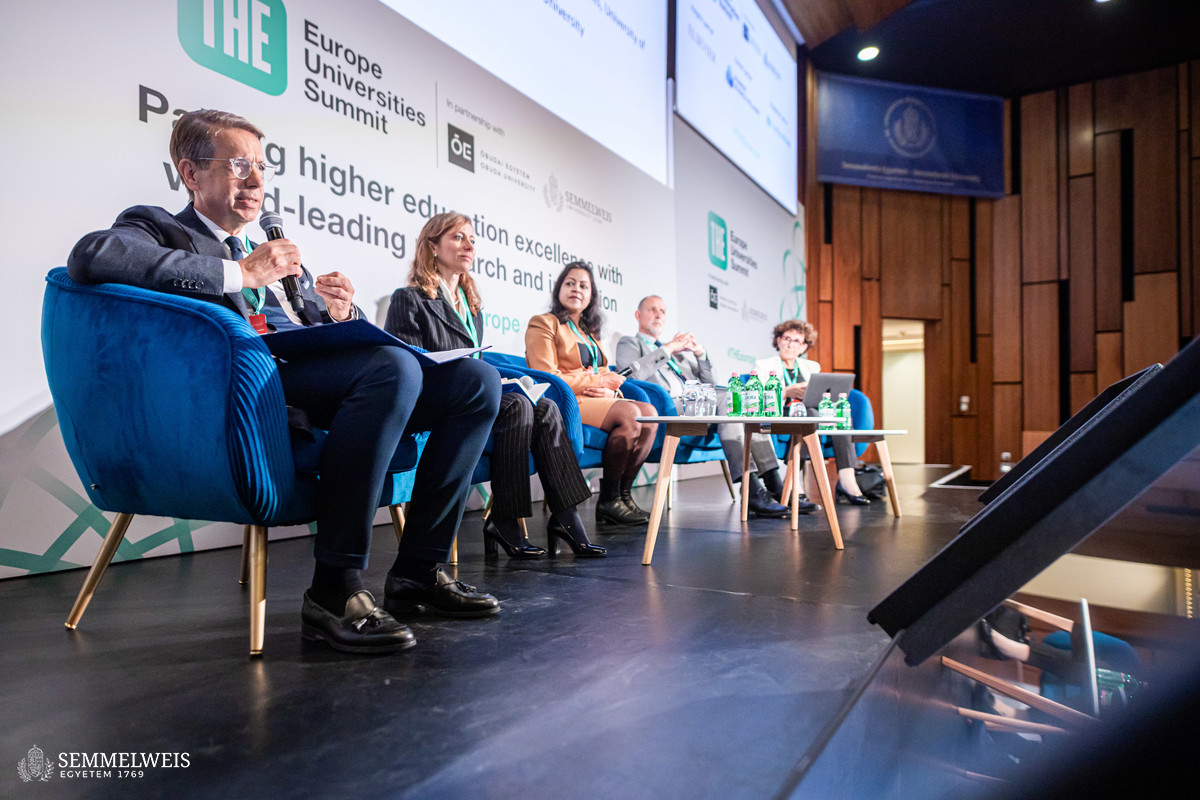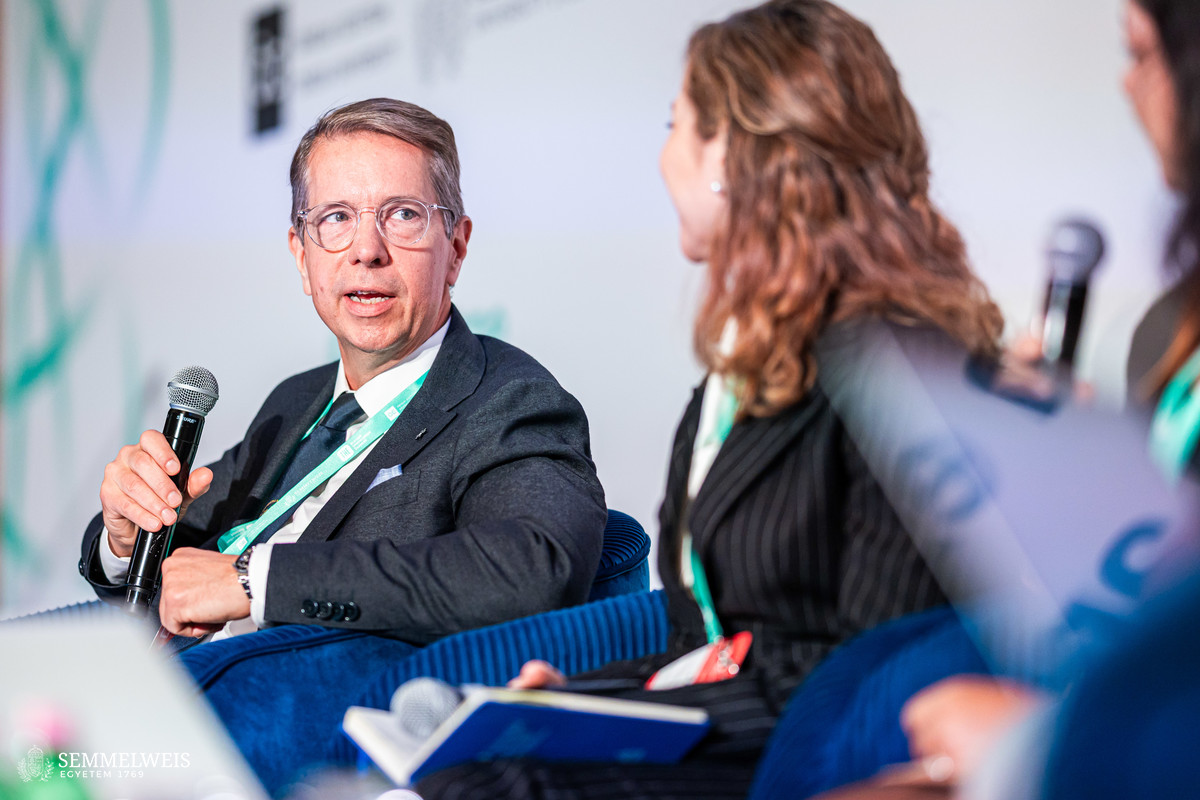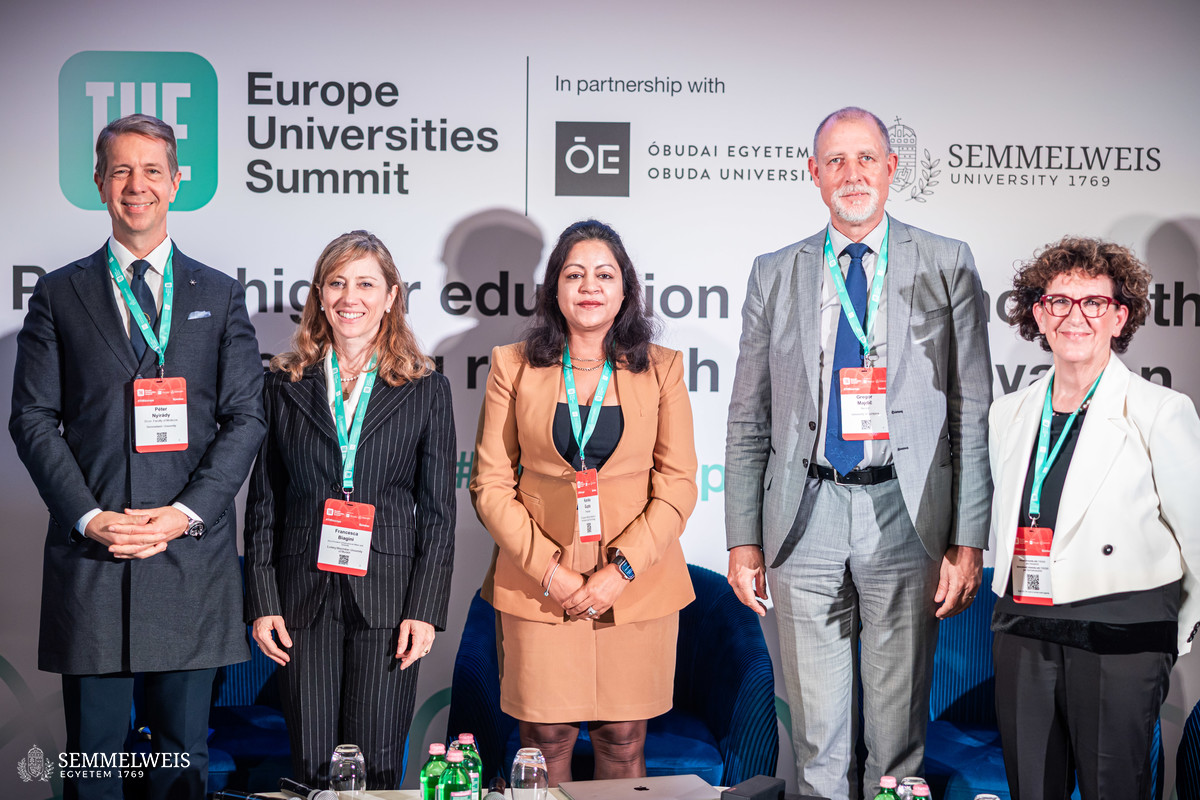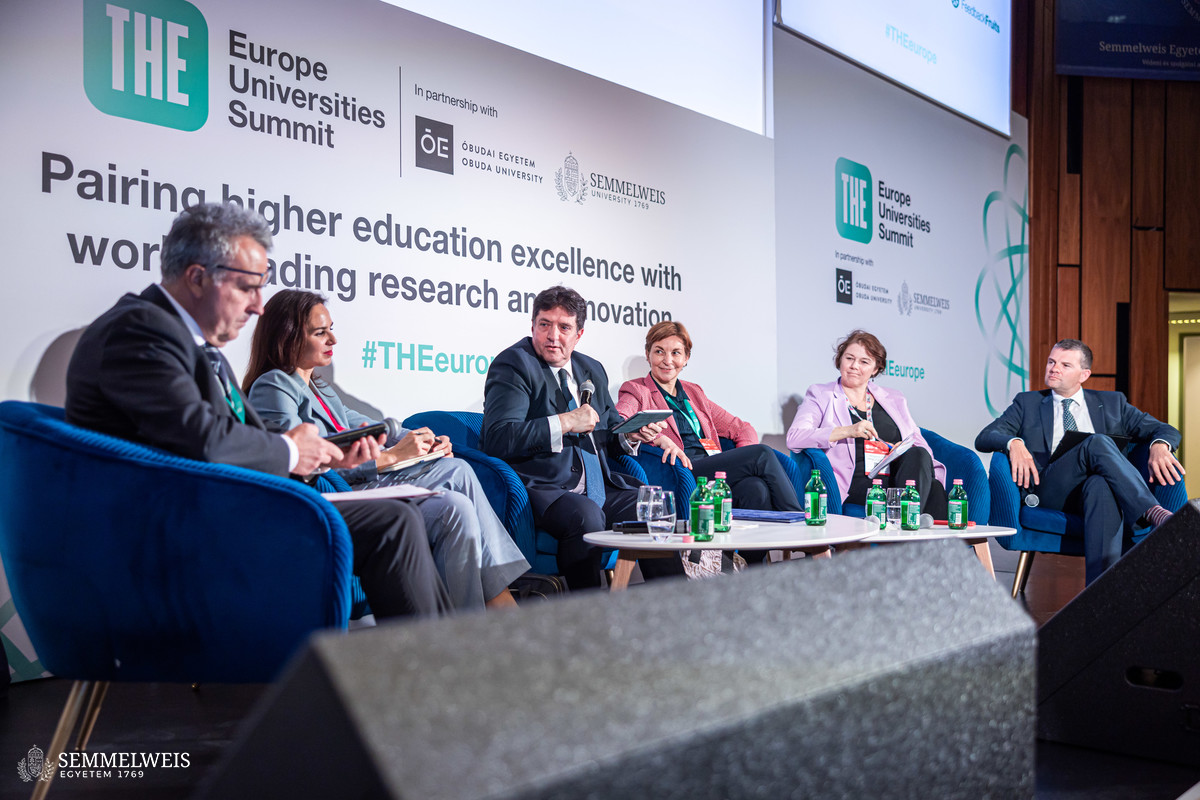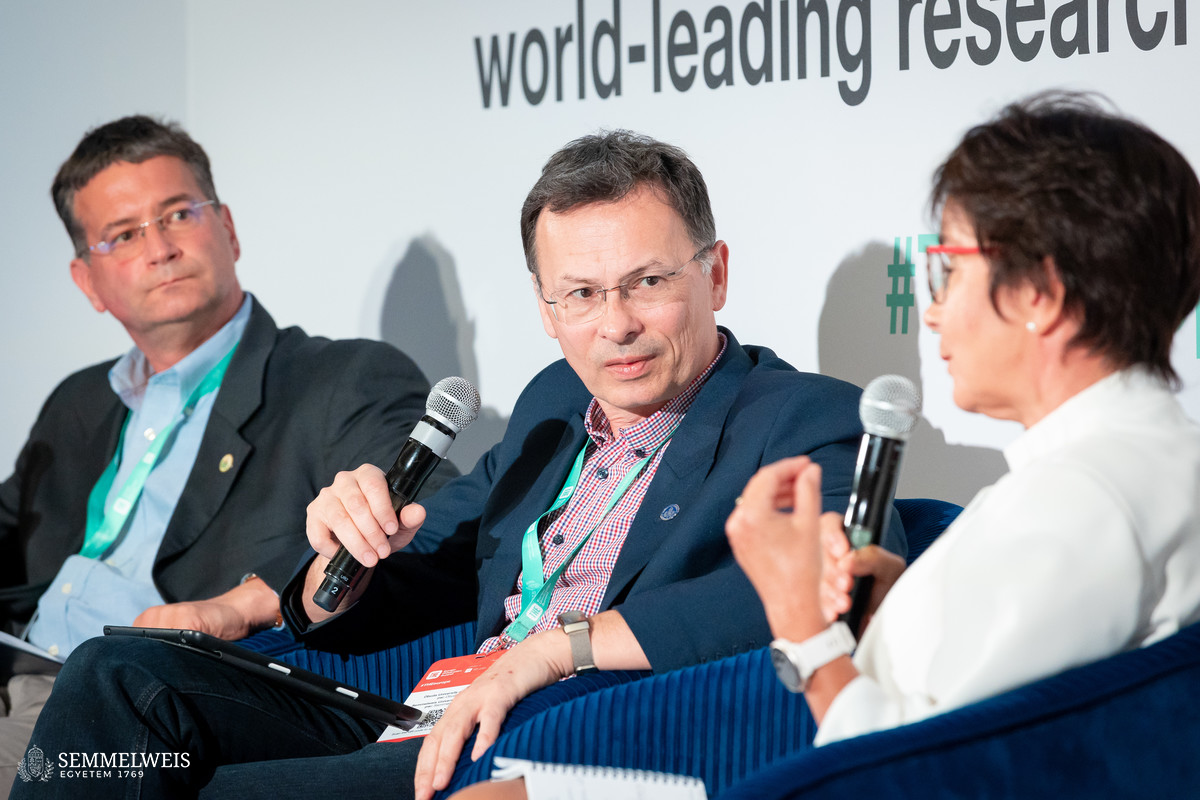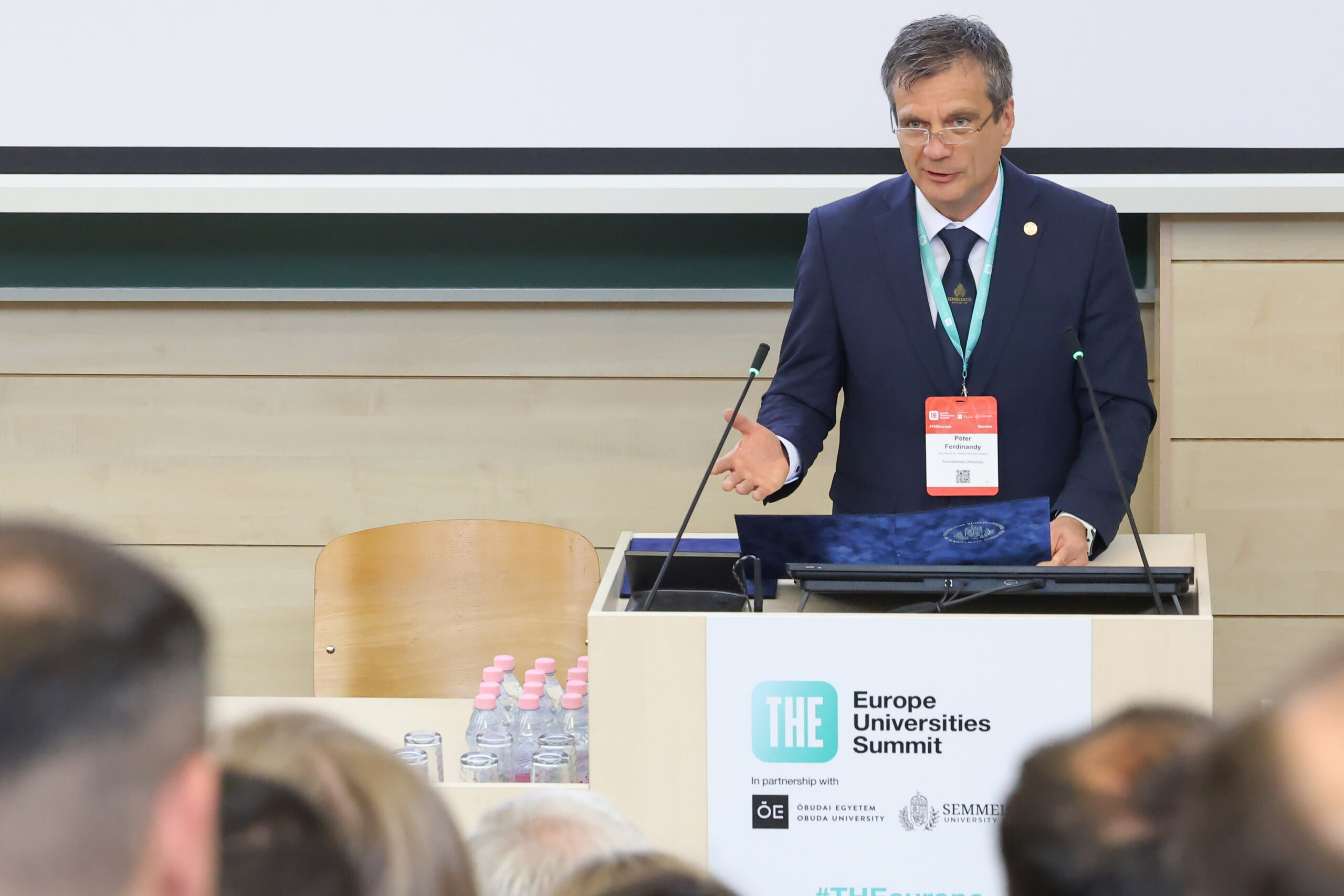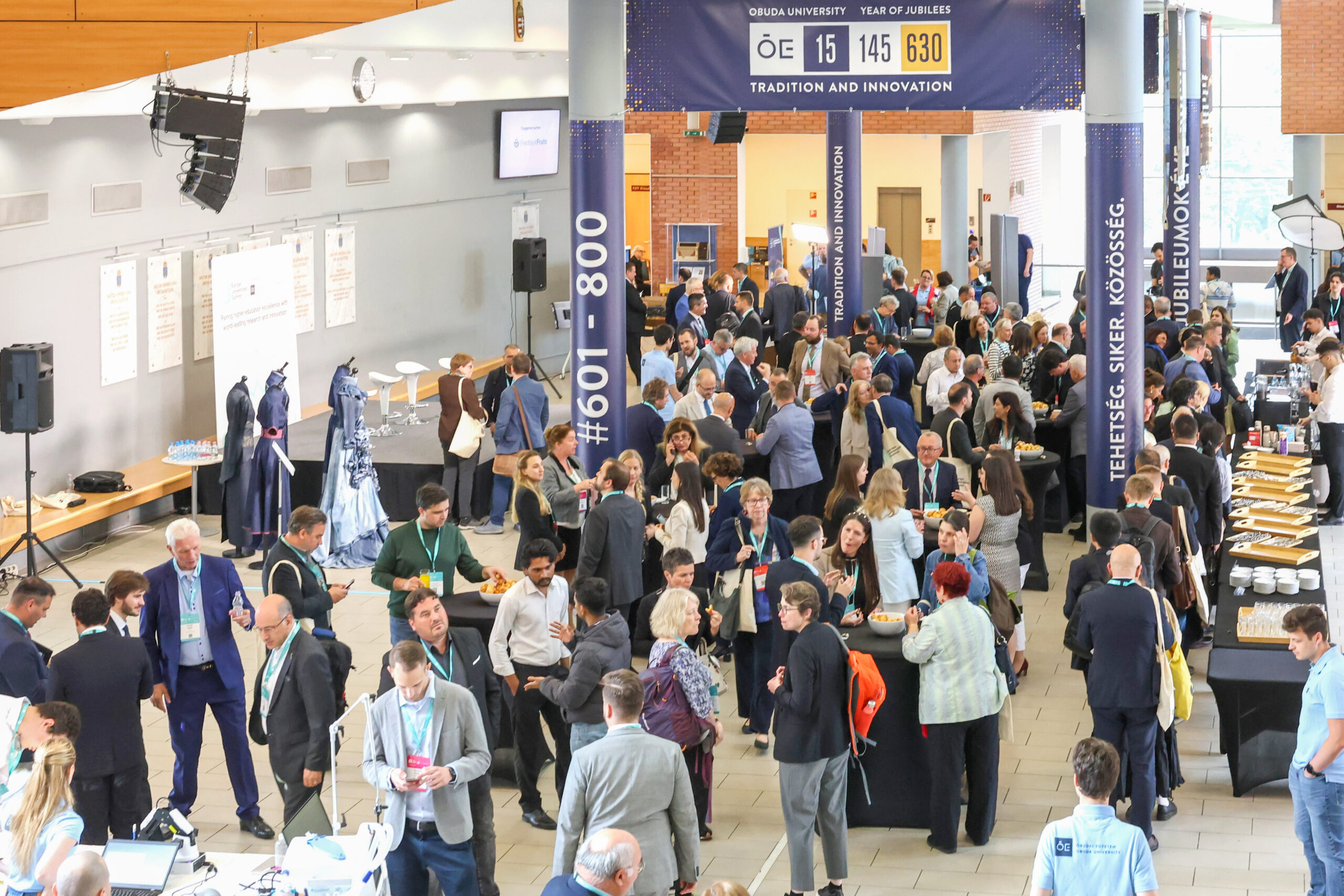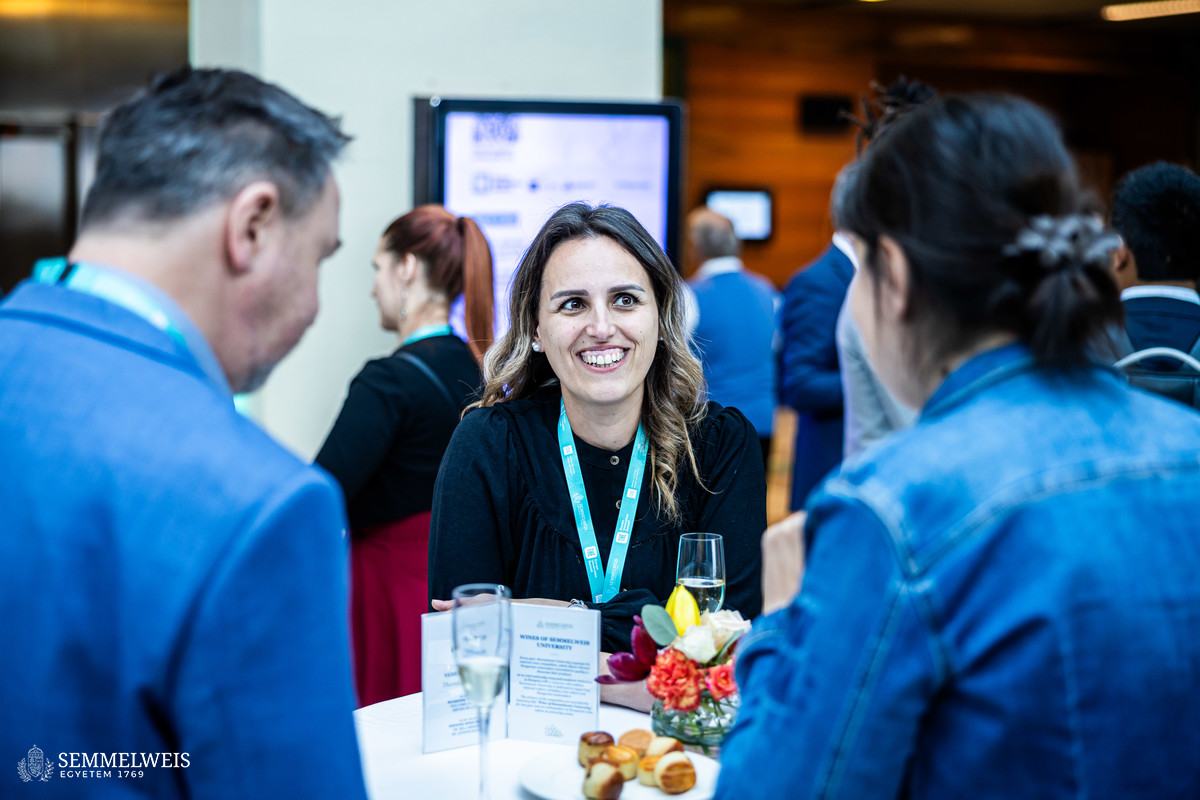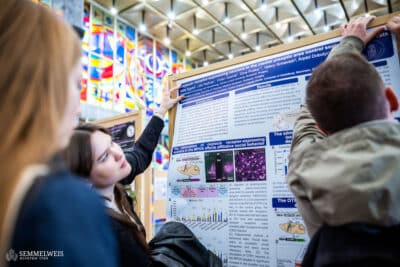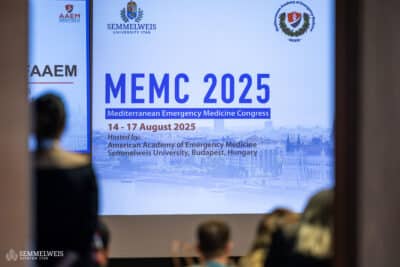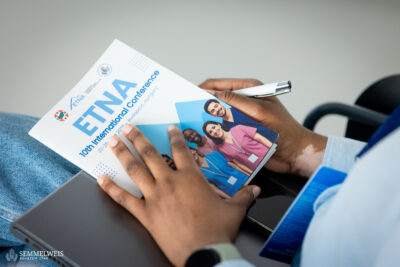Times Higher Education’s Europe Universities Summit examined how Europe’s higher education institutions can use their collective resources to innovate and help solve society’s most pressing problems.
This was the second event jointly organized by THE and Semmelweis University, following the THE University Impact Forum held last September, also at the university’s Basic Medical Science Center (EOK).
On the Pre-Summit Day, participants visiting Óbuda University discussed innovation-related topics, including the innovation ecosystem and the prospects for innovation. Dr. Péter Ferdinandy, Vice-Rector for Science and Innovations at Semmelweis University, emphasized in his welcome speech that collaborative thinking and knowledge sharing were essential for individual innovations, as well as for boosting innovation at a global level and fostering a supportive environment. He stressed that the RDI strategy of Semmelweis University aimed to stimulate the innovation environment, business development, and technology transfer. “We know that there is no innovation without business. In other words, scientific results must be brought to the market to help patients,” the vice-rector pointed out.
 The event continued on May 7 at Semmelweis University’s EOK with sessions focusing on innovation. As Dr. Béla Merkely, Rector of Semmelweis University, stated at the official opening ceremony, one of the main objectives of the THE Europe Universities Summit 2025 was to unite top-performing institutions and world-elite speakers, as well as to foster collaboration at the highest possible level. “By sharing experiences, best practices, and research results during our three-day event, participants will not only increase their visibility but also contribute to the advancement of science, education, and the growth of other attendees,” the rector noted.
The event continued on May 7 at Semmelweis University’s EOK with sessions focusing on innovation. As Dr. Béla Merkely, Rector of Semmelweis University, stated at the official opening ceremony, one of the main objectives of the THE Europe Universities Summit 2025 was to unite top-performing institutions and world-elite speakers, as well as to foster collaboration at the highest possible level. “By sharing experiences, best practices, and research results during our three-day event, participants will not only increase their visibility but also contribute to the advancement of science, education, and the growth of other attendees,” the rector noted.
Dr. Levente Kovács, Rector of Óbuda University, outlined the historical roots of the 15-year-old institution, which date back to the Middle Ages, and then went on to illustrate with a few examples how many inventions Hungarian scientists have given to the world, from everyday objects such as the ballpoint pen to Nobel Prize-winning discoveries. Hungarian higher education institutions have also played a key role in this knowledge transfer, and he expressed his hope that the scientific collaborations of the present era, such as the current exchange of views, would also contribute to the spread of innovative ideas.
“These are demanding times for higher education. Public expectations are rising, and geopolitical changes are challenging some of the core principles of universities, where ideas should know no borders and talent should flow freely,” said Phil Baty, Chief Global Affairs Officer at Times Higher Education, in his opening address. He pointed out that the challenge we faced was translating the excellence we all know and understand into innovation, technologies, and partnerships that improve lives. He added that Europe’s strength was built on collaboration, and that research with international reach, combined with strong governance and digital transformation, would define its future.
Dr. Balázs Hankó, Minister of Culture and Innovation, highlighted that the reform of the Hungarian higher education system had resulted in a 40 percent increase in the number of enrolments, including a 63 percent increase in the number of students in medical and STEM (science, technology, engineering and mathematics) fields and a 20 percent increase in the number of international students. He also outlined the opportunities offered by the Pannonia Scholarship Programme and the HU-RIZON program, which promote Hungarian universities’ global visibility and engagement. The minister stressed that Hungarian higher education institutions were performing increasingly well in international rankings, with 12 Hungarian universities now ranked in the top 5 percent of the world’s universities, including Semmelweis University in the top 1 percent. He pointed out that the goal by 2030 was to have at least one Hungarian university among the top 100 institutions in the world, and three in the top 100 in Europe.
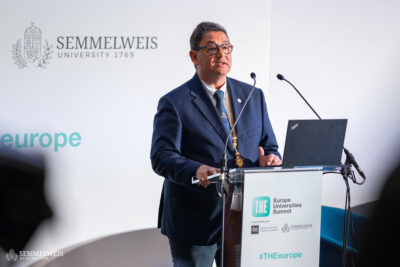 The series of sessions was opened by Dr. Béla Merkely’s keynote speech entitled “On the path to the top 100,” in which he presented the strategic goals of the university and the measures taken to achieve them. The conference also featured several other speakers affiliated with Semmelweis University. Dr. Péter Ferdinandy took part in a panel discussion on the relationship between excellence and research-innovation; Dr. Pál Maurovich Horvat, Director of the Medical Imaging Center, spoke in the session on European research networks. Dr. Péter Pollner, Associate Professor at the Health Services Management Training Center, shared his experiences on the digital transformation that started with the coronavirus, while Dr. Alán Alpár, Vice Rector for International Studies, moderated a panel discussion on the challenges of internationalization.
The series of sessions was opened by Dr. Béla Merkely’s keynote speech entitled “On the path to the top 100,” in which he presented the strategic goals of the university and the measures taken to achieve them. The conference also featured several other speakers affiliated with Semmelweis University. Dr. Péter Ferdinandy took part in a panel discussion on the relationship between excellence and research-innovation; Dr. Pál Maurovich Horvat, Director of the Medical Imaging Center, spoke in the session on European research networks. Dr. Péter Pollner, Associate Professor at the Health Services Management Training Center, shared his experiences on the digital transformation that started with the coronavirus, while Dr. Alán Alpár, Vice Rector for International Studies, moderated a panel discussion on the challenges of internationalization.
The final day of the event focused on the viewpoint of education. Dr. Péter Hermann, Vice-Rector for Educational Affairs, moderated a discussion on the so-called “third mission” of universities, while Dr. György Purebl, Director of the Institute of Behavioral Sciences, chaired a session on mental health, which also featured Dr. Szabolcs Török, Professor at the Institute of Mental Hygiene.
In the session “Placing students at the center – supporting the changing pedagogical needs of learners,” experts drew attention to a shift in learning habits in university students today, who mostly come from Generation Z. The session covered topics such as the importance of intercultural skills, empathy, lifelong learning, inclusiveness and flexibility, and the rise of e-learning. Dr. Péter Nyirády, Dean of the Faculty of Medicine, presented the curricular reform introduced at Semmelweis University, which was designed in the spirit of student-centered, holistic pedagogy, taking into account student feedback and recognizing that each student has different learning needs and styles. The dean recalled that digital technology became mainstream in education during the coronavirus pandemic. “Virtual education is the future because it allows medical students to meet patients in a real-life situation only when they have already acquired the necessary skills,” he noted. Dr. Péter Nyirády also touched upon supporting students’ mental health, which is essential for a successful medical career, and Semmelweis facilitates this with counselling, stress management, mentoring, and resilience programs. In addition to this, the university’s pedagogy pays particular attention to improving emotional intelligence, empathy, critical thinking, adaptability, and communication skills.
Over the past three days, we experienced a wealth of inspiring presentations, bold ideas, and thought-provoking best practices that demonstrated the incredible potential of Europe’s higher education and science. – Dr. Béla Merkely.
Judit Szabados-Dőtsch
Photos by Bálint Barta, Boglárka Zellei – Semmelweis University; Judit Sárai – Óbuda University
